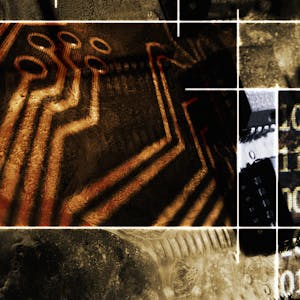Discover the world of information theory with this comprehensive course offered by The Chinese University of Hong Kong. Through engaging lectures based on Prof. Raymond Yeung’s renowned textbook, you will delve into the fundamental limits of communication systems and gain a deeper understanding of their application across various disciplines in information science.
Throughout the course, you will explore the intricacies of information measures, zero-error data compression, typicality, rate-distortion theory, Blahut-Arimoto algorithms, and more. Each module is designed to provide a thorough understanding of the core concepts, enabling you to apply them in real-world scenarios. With a focus on developing practical knowledge, this course equips you with the skills to analyze complex communication systems and make informed decisions.
Upon completion, you will have the expertise to understand and appreciate the fundamental limits in communication systems, paving the way for a deeper understanding of information science and its applications.
Certificate Available ✔
Get Started / More Info
This course comprises 21 modules, each exploring different aspects of information theory, from information measures to differential entropy and continuous-valued channels. Through engaging lectures and assignments, you will gain a comprehensive understanding of the fundamental concepts in information theory and their practical applications.
Course Preliminaries: This module provides an introduction to the course, outlining the grading scheme and setting the stage for the comprehensive exploration of information theory.
Chapter 1 Information Measures: Delve into the fundamental concepts of information measures, laying the groundwork for a deeper understanding of information theory.
Chapter 2 Information Measures - Part 1: Explore various sections of Chapter 2, unraveling the intricacies of information measures and their application in communication systems.
Chapter 2 Information Measures - Part 2: Building upon the concepts from Part 1, this module delves deeper into the complexities of information measures, preparing students for practical applications.
Chapter 3 The I-Measure - Part 1: Uncover the nuances of the I-Measure, gaining insights into its significance in communication systems and information science.
Chapter 3 The I-Measure - Part 2: Continuing from Part 1, this module delves further into the I-Measure, providing a comprehensive understanding of its practical implications.
Chapter 4 Zero-Error Data Compression - Part 1: Explore the intricacies of zero-error data compression, understanding its role in communication systems and its practical applications.
Chapter 4 Zero-Error Data Compression - Part 2: Building upon Part 1, this module delves deeper into the complexities of zero-error data compression, preparing students for practical applications.
Chapter 5 Weak Typicality: Gain a comprehensive understanding of weak typicality, exploring its significance in communication systems and information science.
Chapter 6 Strong Typicality: Explore the concept of strong typicality, unraveling its practical implications and preparing students to analyze complex communication systems.
Chapter 7 Discrete Memoryless Channels - Part 1: Delve into the complexities of discrete memoryless channels, gaining insights into their role in communication systems and information science.
Chapter 7 Discrete Memoryless Channels - Part 2: Building upon Part 1, this module provides a deeper understanding of discrete memoryless channels, equipping students with practical knowledge.
Chapter 8 Rate-Distortion Theory - Part 1: Explore the fundamental concepts of rate-distortion theory, understanding its significance and practical applications in communication systems.
Chapter 8 Rate-Distortion Theory - Part 2: Building upon Part 1, this module delves deeper into rate-distortion theory, preparing students to make informed decisions in real-world scenarios.
Chapter 9 The Blahut-Arimoto Algorithms - Part 1: Uncover the intricacies of the Blahut-Arimoto algorithms, gaining a comprehensive understanding of their practical implications in communication systems.
Chapter 9 The Blahut-Arimoto Algorithms - Part 2: Building upon Part 1, this module delves deeper into the Blahut-Arimoto algorithms, equipping students with the skills to analyze complex communication systems.
Chapter 10 Differential Entropy - Part 1: Explore the concept of differential entropy, understanding its significance and practical applications in communication systems and information science.
Chapter 10 Differential Entropy - Part 2: Building upon Part 1, this module provides a deeper understanding of differential entropy, preparing students to apply this knowledge in real-world scenarios.
Chapter 11 Continuous-Valued Channels - Part 1: Delve into the complexities of continuous-valued channels, gaining insights into their role in communication systems and their practical applications.
Chapter 11 Continuous-Valued Channels - Part 2: Building upon Part 1, this module provides a comprehensive understanding of continuous-valued channels, equipping students with practical knowledge to analyze and make informed decisions in real-world scenarios.
Chapter 11 Continuous-Valued Channels - Part 3: Continuing from Parts 1 and 2, this module delves further into the complexities of continuous-valued channels, preparing students to apply their knowledge in real-world scenarios.
This specialization in Integral Calculus through Data and Modeling equips students with the tools to model and analyze data using integration techniques for single...
Essential Linear Algebra for Data Science provides a clear path to mastering foundational linear algebra concepts crucial for data science.
Mathematics for Machine Learning: Multivariate Calculus offers an intuitive understanding of multivariate calculus, providing the necessary foundation for common...
This course provides an introduction to probability, focusing on teaching fundamental concepts using real-life examples. Students will quickly develop insight and...